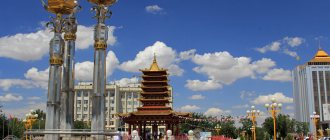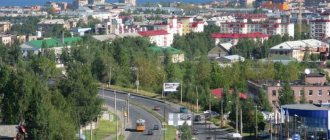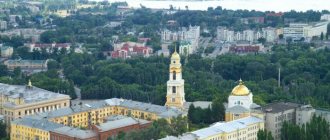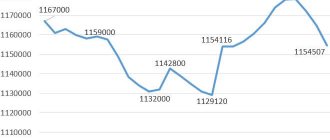Demographic indicators are one of the most important criteria for assessing the well-being of regions. Therefore, sociologists closely monitor the size and dynamics of the population not only in the country as a whole, but also in its individual subjects. Let's consider what the population of the Leningrad region is, how it is changing and what are the main demographic problems of the region.
Geography of the Leningrad region
The region is located in the north-west of the Russian Federation. The area of the region is almost 84 thousand square kilometers. According to this indicator, it ranks 39th in the country. The region is located on the East European Plain, there are no mountains, but there are many different bodies of water. 9 rivers flow through the region, there are 13 fairly large lakes, most of the land is swampy and poorly suitable for human life. The location near the coastline gives rise to an Atlantic-continental climate, with mild winters and cool summers, and the area receives quite a lot of rainfall all year round. This weather is not conducive to farming. This contributed to the fact that throughout the history of their existence, these territories were poorly populated by people. There are few large settlements in the region. The cities of the Leningrad region, whose population has exceeded 50 thousand, can be counted on one hand: there are only 7 of them.
History of settlement of the Leningrad region
The first human sites on the territory of the modern Leningrad region date back to Mesolithic times. In the first millennium BC, in the places that are today known as the Leningrad region, the population began to lead a sedentary lifestyle. People were engaged in cattle breeding, hunting, gathering; these were representatives of the Finno-Ugric tribes. In the 6th century AD, the Slavs came to this territory, settling along the Luga and Oredezh rivers and near the lakes. But so far settlement has been very fragmented. With the development of the Novgorod state, the number of residents of the future Leningrad region is growing. Defense fortifications are built here against raids by northern tribes. At the end of the 15th century, these lands were annexed to the Moscow kingdom, and then a more systematic settlement began. Part of the territory is ceded as a result of Swedish military actions, and a large migration of Scandinavians is added to the Slavs. In the 18th century, after returning the lands of Russia, Peter the Great began to build a new capital here, which led to a surge in the arrival of new people from all over the Russian Empire and the departure of many Swedes and their descendants. Later, almost no significant events occurred on the territory of the Leningrad region that affected the migration of the population, except for the deportation of the Finnish population in 1929 from the annexed Karelian lands. After World War II, these lands were actively developed, new settlements appeared, and the number of residents increased.
At the transportation stage, NEO emphasized irrational logistics: two neighboring houses are “removed” by different companies. At the same time, when at the beginning of 2022, the transport operator in St. Petersburg sent contractors along “optimized” routes, he – and the townspeople – faced problems: the carriers could not get into new yards or did not even know that there was a container there. At the recycling stage, there is the already described situation, when everything goes straight to landfills, and outdated technologies are used for processing - manual selection and screening. In addition, carriers selected the most “tasty” fractions for processing at transshipment stations; as a result, on the one hand, there is no normal extraction of recyclable materials, on the other hand, garbage that is less interesting in a commercial sense goes on. By the way, this is also influenced by the use of garbage trucks with a compaction system - after this, in particular, the quality of waste paper decreases. The landfills themselves are also “running out”, their expansion projects cause an understandable reaction from locals, unauthorized landfills appear faster than they can be liquidated. The governors summed it up even earlier. Alexander Beglov directly said that “you can’t live like this any longer.” His colleague Alexander Drozdenko was also more emotional. Separate and recycle The concept analyzes world experience on various methods of separate waste collection, but we are not yet in Flanders or Ljubljana with its 55 percent indicator. The document names the only official attempt to introduce RSO in St. Petersburg as the processes of 2004–2009, when yellow 0.75 cubic meter bins were installed at container sites for mixed recyclables - metal, glass and plastic, and blue ones for paper. But the matter did not go further than the experiment, among the reasons: “lack of interest of all parties involved - the population, management companies, carrier companies; unprofitability for monopolists; garbage from the bins was mixed back into the garbage truck; wipers often placed the tanks with the receiving slot against the wall, etc. Then there were only public initiatives and private business projects of individual carriers, there are about 50 of them for both regions, and collection points - 450. Somewhere this is a tank for a specific type of raw material at a garbage dump, somewhere - a centralized collection near a shopping center, somewhere - there are machines for receiving recyclable materials, somewhere they collect toothbrushes, etc. This is not counting the various forms of acceptance of hazardous waste from the public. Like everything else, the reoperator proposes to unify separate collections; that’s why it was created. In theory, it might seem that if citizens start dividing garbage into 10 fractions at the container stage, then an era of prosperity will begin. In practice, no, says the concept: “Despite the expected high quality of recyclables with multi-stream separate collection, modern research shows that as the number of collected fractions increases, the total recovery of recyclables decreases,” the authors write. — The greater the number of selectively collected fractions, the smaller the proportion of the population is ready to support this collection format. The maximum achievable percentage of population participation in separate collection is observed with a two-stream system and is 75–80%. As the number of fractions increases, the proportion of cases where a resident cannot determine which container a given item should be thrown into also increases, and the mutual contamination of fractions increases.” Simply put, we will divide it into two piles: one containing recyclables and one containing wet organic matter; and the final sorting will take place in the factories of the future.
Administrative-territorial division of the Leningrad region
Before the revolution, the territory of the modern Leningrad region was home to five provinces: St. Petersburg, Pskov, Cherepovets, Murmansk and Novgorod. Later, the system of territorial division undergoes various changes. In Soviet times, there were 17 districts and 19 cities of regional subordination. Since 2006, a new, two-level system of administrative division of the constituent entities of the Russian Federation was introduced. In the Leningrad region, one urban district and 17 municipalities, 61 cities and 138 villages were allocated. At the same time, St. Petersburg is a federal district and, despite its organic connection with the region, exists in an administrative sense separately from it. Therefore, it is worth considering separately the residents of the region and the population of St. Petersburg.
Throughout its history, the Leningrad region has had to endure numerous changes in administrative division. New units appeared, some disappeared, and renaming occurred periodically. The population of the Leningrad region is accustomed to the fact that they periodically have to change their addresses.
Total population
The history of observations of the number of inhabitants in Russia begins during the Tatar-Mongol invasion. However, separate information on various subjects, including the Leningrad region, appeared only in Soviet times. Due to the fact that the region changed its borders several times during the years of Soviet power, there is no definitively reliable figure on the number of residents. Today, the total population of the Leningrad region is 1,778,890 people (according to statistics for 2016).
Population dynamics and density
Since 1926, relatively regular statistics on population dynamics in the USSR have been kept. Over the years, the number of residents has changed several times. Initially it was 2.8 million people, in 28 this figure increased (thanks to the annexation of Karelia and Leningrad) to 6 million. And in 1959 it sharply decreased to 1.2 million people due to military losses and the exclusion of Leningrad from the region. In Soviet times, the Leningrad region, whose population was growing steadily, showed good growth figures - approximately 1 thousand inhabitants per year. During the era of perestroika, as throughout the country, negative dynamics were noted in the region. And only since 2010 the number began to grow gradually. The population density in the Leningrad region is currently 21.2 people per square kilometer. This is 45th place in Russia out of 85 possible. The highest density is observed in the St. Petersburg agglomeration; the eastern part of the region is the least populated.
Sosnovy Bor is a closed city with interesting monuments
Sosnovy Bor is the only city on the list that is simultaneously in fourth place in terms of number of inhabitants and size with values of 68,045 people and 72 km². Despite the fact that it was given city status only in 1958, the small village of Ustya was listed on the Ingrian map of 1676. The town is famous primarily for the nuclear power plant located here. In 1981, it was considered the largest in the world, and in 2002 it set a European productivity record, producing the 600th billion kWh. Because of the nuclear power plant, it is one of the so-called closed cities: foreigners are prohibited from entering here without special permission, and since 2013 Russians are allowed only with a passport.
In this regard, the town has themed attractions. Among them are a bust and a monument to Anatoly Petrovich Alexandrov, one of the founders of nuclear energy in the USSR, as well as a monument to the liquidators of the consequences of the nuclear power plant accident in Chernobyl. However, another one is more famous - Andersengrad: a children's entertainment area, stylized as a medieval town, as if straight from the pages of Andersen's fairy tales. It attracts not only kids: against the backdrop of cobblestone walls and houses with tiled roofs, atmospheric photographs are obtained.
Ethnic composition
The population of the Leningrad region begins to be analyzed on the basis of “nationality” only in 1959. At this time, the region was already completely Russified; the times of great ethnic diversity were a thing of the past. On average, during Soviet times, about 90% of the region's population was Russian. In the 2000s, this figure decreased slightly - to 86%, apparently due to people from Central Asia who came to work. In second place in terms of numbers are Ukrainians - 1.8%, in third place are Belarusians (around 1%), followed by small groups of various ethnic groups: Tatars, Armenians, Uzbeks, Azerbaijanis, Finns, etc.
Gender model
The Leningrad region, whose population in terms of indicators is close to similar characteristics of other regions, according to the age and gender parameters of its residents, belongs to the aging type. The number of citizens under working age is about 16%, and residents over working age are about 23%. Due to the fact that the increase in the birth rate has not yet covered this difference, we can say that the prospects for population rejuvenation are still very weak. Sex distribution in the Leningrad region also generally coincides with trends throughout the country. The number of women exceeds on average the number of men by 1.2. The majority of adults are married (about 55%), while there are 5 times more widows than widowers. There are also more divorced women than men.
Demographics
Fertility is the most important demographic indicator that demonstrates the degree of well-being of a region. Social protection of the population of the Leningrad region is a pressing issue. The relevant committee notes that since 2011, the birth rate in their territory has been growing, albeit at a very slow pace, by about 2 people per 1000 inhabitants. But, according to sociologists, the birth rate will decline slightly in the coming years.
The second most important indicator is mortality. For several years in a row in the 21st century, a decrease in mortality was observed in the Leningrad region. But since 2014, the number of deaths began to increase again, and it is expected that this trend will continue in the next 5 years. Thus, in the Leningrad region there is a natural population decline, by approximately 5 people for every thousand inhabitants. Migration growth has been increasing in recent years; sociologists note that quite a lot of women of childbearing age are coming, this allows us to hope that the situation with the birth rate will soon improve. The largest sources of migrants are Ukraine, Belarus, Kyrgyzstan, and Moldova. Sociologists predict a slight decrease in the number of arrivals due to problems in the labor market.
Life expectancy is the third most important criterion for the well-being of a region. How are things going with him in the subject of the Russian Federation we are considering? The average life expectancy in the Leningrad region is 70.2 years: women live approximately 75 years, men - 64 years.
All these data allow us to say that the Leningrad region, whose population is gradually aging, fits into the general trends of Russia. The region cannot yet move to a productive, youthful type, and there are many socio-economic reasons for this.
Gender and age
Every city in the world can be characterized by a general description of its demographic pattern. Important indicators of the assessment system are gender and age indicators of the population. The average gender and age parameters of St. Petersburg residents have not undergone any significant changes recently. There is a noticeable trend of a slight increase in the number of young people (however, in general, middle ages still predominate). The high percentage of women in the population, traditional for Russia, also stands out.
The average age of St. Petersburg residents is 41 years. There are 1,208 women per 1,000 men, with an electorate of 5,398,064 people. Such indicators are similar for all major cities of the Russian Federation. St. Petersburg, in terms of gender and age of the population, is a classic federal center of Russia.
Population distribution
Today, the main population of the districts of the Leningrad region lives in cities. According to statistics, the urban population is 1,142,400 people, and the rural population is 636,500 people. At the same time, most of the residents settle closer to St. Petersburg, where they can find higher-paying jobs. The region's settlements, by Russian standards, are generally small in size. In the Leningrad region there are only 31 cities with a population of more than 10 thousand people, and there is not a single one where more than 100 thousand inhabitants are registered.
National composition of St. Petersburg
The bulk of the population of St. Petersburg are Russians - almost 4 million people . This represents about 85% of the total population. Ukrainians 87,119 (1.87%), Belarusians - 54,484 (1.17%).
As well as other nationalities:
- Jews - 36,570 (0.78%);
- Tatars - 35,553 (0.76%);
- Armenians - 19,164 (0.41%);
- Azerbaijanis - 16,613 (0.36%);
- Georgians - 10,105 (0.22%);
- Chuvash - 6,007 (0.13%);
- Poles - 4,451 (0.1%);
- Finns - 3,980 (0.09%);
- Koreans - 3,908 (0.08%);
- Germans - 3,868 (0.08%).
Employment
According to social protection services, in 2016, employment of the population of the Leningrad region remains within the framework of all-Russian indicators, but there are also differences. Unemployment is 4.6 percent, slightly lower than the rest of the country. There are forecasts that this figure will soon increase to 5.1% due to economic difficulties in the country.
The employment structure is as follows: 21% of the population works in the manufacturing industry, 11% of the region's residents work in trade, 9% each in construction and transport, 8% in education, 7% each in healthcare and agriculture. In general, the employment structure corresponds to the Russian average, but the hospitality sector is poorly developed in the region, which could increase the number of jobs.
Kirovsk is large in size, but not in number of inhabitants
Large in size (84.9 km²) and small in population (26,387 people) is Kirovsk, founded in 1931 and named after the revolutionary Kirov. There are plenty of jobs here: there is a state district power station and 10 industrial enterprises. In this regard, since 2000, the number of city residents, although slowly and unstable, has been growing: the value has increased by 3,000 over 20 years.
There are few attractions in Kirovsk, most of them are related to the Great Patriotic War. The most significant is the open-air museum “Breakthrough the Siege of Leningrad,” since bloody battles for the fate of the besieged city took place in the surrounding area. Among the unusual monuments is the sculpture of Peter I, recreated in 2013 according to surviving drawings, which was created by Putilov stonemasons in the mid-19th century on the outskirts of modern Kirovsk.











